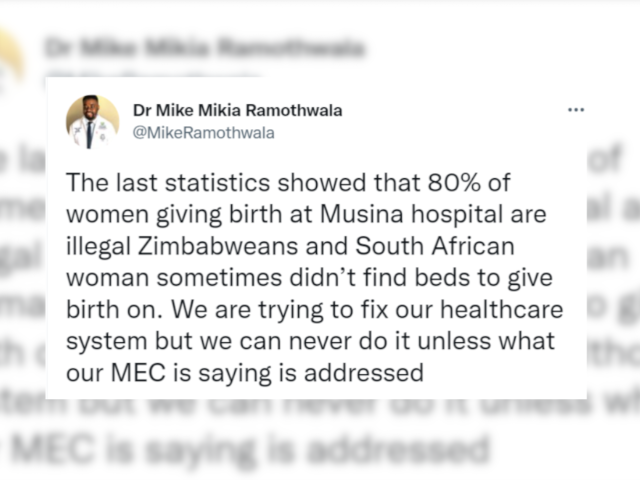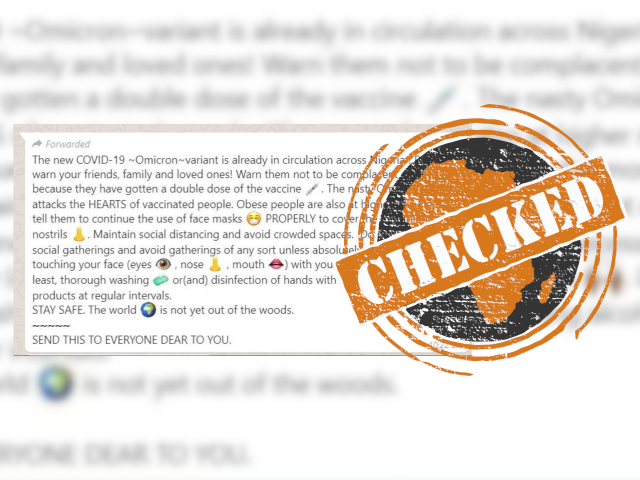This article is more than 4 years old
- Gauteng province’s head of health, Bandile Masuku, recently claimed that South Africa’s caesarean rate is twice the globally accepted average recommended by the World Health Organization (WHO).
- In 1985, a meeting of WHO experts did conclude that there was “no justification for any region to have caesarean section rates higher than 10-15%”. But the statement was revised in 2014.
- Currently, the WHO does not recommend an “ideal” caesarean rate. Instead, every effort should be made to provide caesarean sections to women who need them, an expert told Africa Check.
Two women died while giving birth in South Africa’s Gauteng province during the 2019 festive season, the provincial government’s health representative, MEC Bandile Masuku, told Eyewitness News in January 2020.
Masuku was also reported to have said that South Africa’s caesarean rates are twice the globally accepted average.
Is this claim accurate? We checked.
South Africa’s public caesarean rate 27.4% in 2017
A caesarean section is a surgical procedure used to deliver a baby through an opening in the mother’s lower abdomen rather than through the vaginal canal. Some pregnant women choose to have the procedure done but many caesareans happen because of complications during pregnancy or labour.
We asked Masuku’s office for the source of the claim that South Africa’s caesarean rate was twice the globally accepted average. Philani Mhlungu, the MEC’s spokesperson, gave us evidence to show that Gauteng province’s caesarean rates were twice the globally accepted average.
In Gauteng, during the 2017/18 financial year, 29% (63,560) of all births occurred via caesarean section, he said. He added that the World Health Organization “recommends 15% of births to be caesarean births”.
The Saving Mothers reports, prepared by the department of health’s national committee for confidential enquiry into maternal deaths, also contain figures on caesarean rates.
The latest report shows that in 2017, 29.4% (62,847) of all public sector births in Gauteng were via caesarean delivery. South Africa’s national public sector caesarean rate for the same year was 27.4% (248,381).
Private sector rate was 76.9% in 2017/18
The Council for Medical Schemes told Africa Check that in the 2016/17 financial year, 75.7% of all deliveries in private medical facilities were via caesarean section. During the 2017/18 financial year the figure increased slightly to 76.9%.
Calculating a combined public and private rate isn’t straightforward. The public data is reported by calendar year and the private data by financial year.
However, if we use 2017 data from the department of health and private data from 1 April 2017 to 31 March 2018, the figure is 32.6%.
How do these rates compare to countries around the world?
Globally, 21.1% of all births occur via c-section
Naomi Massyn is one of the editors of the District Health Barometer report, an annual publication that monitors health data from each of South Africa’s 52 health districts.
She referred Africa Check to a study published in the Lancet medical journal, which included data from 169 countries. It showed that globally there were 29.7 million caesarean deliveries in 2015. This was 21.1% of all births that year.
South Sudan recorded the lowest caesarean rate, at 0.6% in 2010. The Dominican Republic had the highest rate – 58.1% in 2014. When regional data was examined, the researchers found that caesarean rates were lowest in West and Central Africa and highest in Latin America and the Caribbean.
WHO does not recommend ‘ideal’ rate
But how many caesarean deliveries are too many? We contacted Dr Ana Betran from the WHO’s department of reproductive health and research. She leads the organisation’s work around caesarean sections.
The phrase “globally accepted average” is confusing, Betran told Africa Check.
“There is an average rate of caesarean section worldwide. If you take the caesarean rate from all the countries and you calculate the average, you get about 20%.” But that has nothing to do with an “accepted” caesarean rate, she said.
In 1985, the WHO met with experts to discuss what was thought to be a large increase of caesarean rates worldwide. Based on the evidence available, they concluded that “there is no justification for any region to have caesarean section rates higher than 10-15%”.
But this conclusion was based on data from northern European countries where the outcomes were the best in the world, Betran explained. “So, by default, it was accepted that if these north European countries could achieve the best outcomes of a caesarean section rate between 10 and 15%, that should be considered the optimal caesarean section rate.”
Nearly thirty years later, in 2014, the WHO conducted a review to “understand whether this 10 to 15% still held”, Betran said. The organisation then said that it was unclear what effect caesarean section rates had on outcomes like the death rates of mothers and babies.
“There is not sufficient evidence,” Betran said, which is why the WHO “does not currently hold a recommendation for an ideal caesarean section rate”.
“Rather than strive to achieve a specific rate, WHO’s message is that every effort should be made to provide caesarean sections to women in need,” Betran said.
‘There is no good or bad caesarean section rate’
When asked whether South Africa’s caesarean rate of 27.4% is concerning, Betran said: “There is no good or bad caesarean section rate. There are good and bad outcomes.”
For example, if a country has a caesarean rate of 20% and all the outcomes are good, it’s great. But if a country is trying to lower its caesarean rate and it still has bad outcomes, that’s not good, Betran explained.
One also has to consider the differences in healthcare systems, Betran said.
“We could never judge if it was appropriate for a Tanzanian doctor, looking at a woman that is having difficulties, to decide at four in the afternoon to do a caesarean section if he knows that he’s not going to have any obstetrician on call overnight.”
In comparison, Betran explained, a doctor in the United Kingdom might allow a woman to continue labouring through the night, knowing that there will be an obstetrician and anaesthetist available if there is an emergency.
Conclusion: WHO used to recommend caesarean rates between 10 and 15%, now says ‘every effort should be made to provide caesarean sections to women in need’
In early 2020, Gauteng health MEC Bandile Masuku claimed that South Africa’s caesarean rates are twice the globally accepted average.
The World Health Organization previously recommended that caesarean rates should range between 10 and 15% but this was revised in 2014. Due to lack of evidence around the effect of caesarean section rates on other outcomes, the WHO does not currently recommend an ideal caesarean section rate.
The latest data shows that South Africa’s caesarean rate in public hospitals was 27.4% in 2017. When we take into account data from the private sector, the national caesarean section rate rises to just over 32%.
None of these figures are twice the global average of 21.1%.





Add new comment